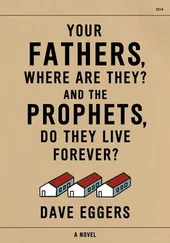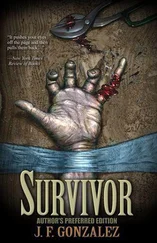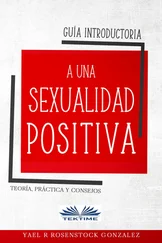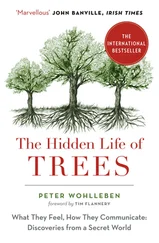The photos corresponded exactly with what he knew about Maggie and Vince. The last photo in the album was from the summer of 1974, judging by the dates printed in black along the white edges. That corresponded to the time Maggie had told Lillian and a few others of when she left California. Her original story, one she stuck with for years and hardly talked about, was that she was involved with a bad crowd in California that was into drugs and she’d left with her son to escape that life. She’d taken Jesus into her heart a year later, in Buffalo, New York where she was trying to start a new life with Vince. Looking through those photographs for the first time, Hank’s first impression was that she’d been a hippie, one of the countless love children who flocked to California in the 1960s and blew their minds on drugs. The newspaper clippings changed his view on that.
He was pretty certain of one thing, though. He was fairly confident that Maggie wasn’t involved in the Manson case. He was also pretty sure she wasn’t a member of the infamous Manson Family. He’d gone to the Lititz Public Library and spent the day on the Internet, reading through various web pages on the case until he grew disgusted with the outlandish theories and stories posted. He’d finally asked a librarian for help and went home with a paperback of Ed Saunders’s Helter Skelter . He’d combed through the book, trying to find any mention of other family members. He was unable to find any reference to neither a Maggie Walters nor a Margaret Harris. Likewise, the names that were scrawled in the photo album—Tom and Gladys Black, Paul and Opal Johnson, among many others, weren’t found in the book either. Nor was there any mention of a Samuel F. Garrison.
But the few group shots in the photo album with the names of the various parties identified in black ink sure gave him the impression they were part of that whole counter-culture scene. They certainly looked like they could have belonged to the Family, with their long hair and love beads, their halter-tops and bell-bottom jeans. Their smiling faces bore striking resemblances to the smiling faces of those that had butchered all those people during that hot, sweltering summer of 1969.
Okay, so maybe Maggie wasn’t involved with Manson. But she was either really interested in the case or had some kind of knowledge of it. Maybe she’d known some of the people involved. Maybe she had other suspicions. She also had some knowledge of the Son of Sam killings. Maybe they were just speculations. Who knows? Personally, I don’t know what to make of it. Maybe in her drug-addled mind she developed some crazy conspiracy theory. Maybe some of the people in these photographs—Gladys and Tom, Paul and Opal, maybe this Samuel Garrison person—knew something about the Manson and Berkowitz cases. Maybe they know something and because she knows that they know, she hid this stuff in the box. Maybe all those clippings about dead dogs and missing kids have something to do with it. Maybe this Samuel Garrison character has something to do with it—after all, she did make mention of a Sam in that scribble ‘did Sam order this?’ Maybe this Sam is the ‘Sam’ of Son of Sam. It seems even she wasn’t entirely sure, but it seems likely that she had reason to believe that the people she was involved with could have been capable of having something to do with both cases. Look at the murder of Shorty Shea; she basically speculates that it looked like something the group could have had something to do with, as if they’d participated in similar crimes. Shea’s murder was solved—a few of the Manson henchmen confessed to that particular killing because the poor guy knew too much. Knew too much of what, though? And why would Maggie believe the people she associated with would have anything to do with the Manson family?
It was puzzling and frustrating. The more Reverend Powell tried to come up with a suitable explanation, a thousand more questions popped into his mind to create more questions that needed answers. What had Maggie been involved with? Why had she gone through such pains to change her identity and the identity of her son? What kind of danger had she been in? And why? Did she witness some crime? Did she have knowledge of some criminal organization?
Did that criminal organization finally find her and come out here after more than twenty years?
Reverend Powell shuddered as his hands rested on the box. He had a sinking feeling that whatever it was, the answer lied in how Maggie Walters had died. Her torture, the plucking out of her eyes, the ripping out of her heart, the occult-like symbols written on the wall in her blood. Chief Hoffman and the Lancaster detectives were chalking it up to a robbery by some deranged kid. And while he hated to lay the blame on the most convenient scapegoat—Satan himself—he couldn’t help but come to those conclusions in this case.
Because let’s face it , he thought. Maggie was very much at war with Satan in the last ten years of her life. It was so bad she was a little embarrassing to be around. She saw the devil everywhere; in the bar codes at the supermarket; in the invention and proliferation of debit cards; in the Internet; in popular culture; even in the government and large Christian organizations like the Christian Coalition. She saw the devil the way some Catholics saw the Virgin Mary in the bark of a tree .
In the wake of all that happened the past week and what he’d found, was her paranoia justified? Reverend Powell thought about this as he rose to his feet and headed back to the storeroom to replace the box. He didn’t know. He wanted to find out more. He wanted to speak to somebody who had knowledge of such things. He knew of an occult expert, a fellow brother in the Lord, who had been called to go out to battle against Satan and all his allies. This friend ran a ministry in Philadelphia and Reverend Powell very much wanted to talk to him and tell him everything. Maybe Alex could help him put the pieces together.
But for now, he would keep his fears and suspicions to himself. He replaced the box in the cubby, turned off the light in the storeroom, and then closed the door.
He picked up the Colt .45 from the end table, checked it, then headed upstairs. Even though his rational mind told him that he was safe, that there was no way that whoever killed Maggie would have any knowledge of what he knew, would probably have no knowledge of the box, he still felt scared. He double checked all the locks, made sure the blinds were drawn, then went to his bedroom where he sat up in bed till one a.m., still too afraid to fall asleep.
HE HATED LYING to Carol, but he’d just told her a dozen lies as he was packing his bags in their master bedroom. Carol Peterson stood at the threshold of the bedroom, looking worried and concerned. She was wearing a pair of denim shorts and a white blouse, her auburn hair falling about her shoulders in curls. She’d been lounging on the sofa in the family room watching a soap opera when Mike came home, and now all she could do was pace back and forth between the den and the bedroom. “This has something to do with John, doesn’t it?”
Mike zipped up his duffel bag. He had packed bare essentials; underwear and socks, two pairs of jeans, some T-shirts and some more sporty shirts, and toiletries. He sighed. “What makes you think this has to do with John?”
“Because he was acting just as strange as you are right before he went downhill again,” Carol said, hands on her hips. “He was being evasive and now you are, too. You don’t have any consulting job lined up. You can’t fool me anymore, Mike.”
Mike stood up and tried to walk past her, but she blocked his path. “Carol!”
“Mike!” Her tone was stern. She glared up at him, fire in her eyes.
Читать дальше












